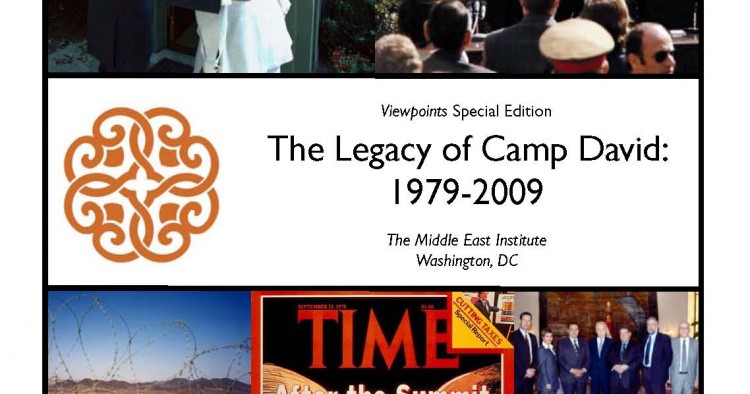Since the “Six Day War” in June 1967, countless American and other diplomats have sought almost continuously to broker peace between Israel and its surrounding Arab enemies. From that tangled history, one achievement stands tallest in a forest of scrub: the Egypt-Israel Treaty signed on March 26, 1979 on the White House front lawn by President Anwar Sadat, Prime Minister Menachem Begin, and President Jimmy Carter. That the peace agreement remains intact 30 years later would have confounded many who applauded enthusiastically at its signing, but were convinced that without parallel agreements with Syria, Jordan, Lebanon, and the Palestinians, its life span would be fragile and probably brief.
The still-born Oslo Accords in 1993 provided political cover for King Husayn of Jordan to finalize his own peace with Israel soon thereafter. That culminated many years of covert Jordanian-Israeli contacts and the King’s long-standing determination to reach peace with Israel as soon as the Palestinian dilemma could be resolved in a fashion that would not leave him open to attacks for betraying their cause. Other negotiations with Lebanon, with Egypt acting on behalf of the Palestinians, with Syria, and with the Palestinians directly after Oslo have all foundered. Terrorist attacks, harsh Israeli retaliation, guerrilla warfare, and outbreaks of major warfare with Hizbullah in Lebanon in 2006 and Hamas in Gaza in 2008 — all have interrupted or destroyed sometimes promising American mediation efforts. And yet, through all the years since 1979, peace between Egypt and Israel has held together, despite sometimes exceedingly heavy strains. It has become a rather cold peace, but peace nevertheless. Even at the moments of greatest stress, such as Israel’s attacks in 1982 on the Palestine Liberation Organization (PLO) and the Syrian Army in Lebanon, few influential voices in either country have advocated violation or abrogation of the treaty.
In this excellent collection of essays are found many perceptive explanations along with valuable descriptions of how the many facets of Israeli-Egyptian relations have evolved under the treaty regime. Stark cultural differences and unrealistic expectations still afflict both parties and have often produced much disappointment in one another’s behavior. But the durability of the treaty reflects the fact that it satisfied and still satisfies the basic national interests of both nations.
As an active participant in the whole Camp David process from 1977 to 1985, I conclude that success stemmed from several factors. First, Egypt and Israel were both ready for a serious effort to achieve peace, ripened by the heavy costs to both sides in the 1973 war. Second, Begin and Sadat had sounded each other out secretly via trusted emissaries and found that each side’s basic demands might be met with effective help from an active American mediator. Third, President Carter had come into office deeply determined to achieve a comprehensive Middle East peace. When his effort to convene a broad peace conference seemed about to fail and Sadat’s surprise trip to Jerusalem redirected the whole effort into a bilateral Egypt-Israel channel, Carter reluctantly adjusted his sights and committed the United States wholeheartedly and obsessively to help achieve what was actually achievable. Fourth, Sadat, Begin, and Carter were strikingly different personalities who all dominated their respective political polities in those crucial years, who all were driven to seek an historic achievement of peace, and who had the supreme self-confidence to take political risks when essential.
Others made great contributions, notably Moshe Dayan and Cyrus Vance, without whose unceasing exploration of how to break through negotiating road blocks, the treaty could have foundered. But it was essentially because the stars were aligned and powerful, determined leaders happened to be in power in the three capitals, that peace between Egypt and Israel was finally attained after 30 year of bitter, bloody wars. Now, 30 years later, that peace remains solid and essential.
The essays which follow greatly enrich our understanding of this extraordinary event and its continuing consequences. Sadly, we are still drudging through Middle Eastern sands in search of another such breakthrough.
The Middle East Institute (MEI) is an independent, non-partisan, non-for-profit, educational organization. It does not engage in advocacy and its scholars’ opinions are their own. MEI welcomes financial donations, but retains sole editorial control over its work and its publications reflect only the authors’ views. For a listing of MEI donors, please click here.













